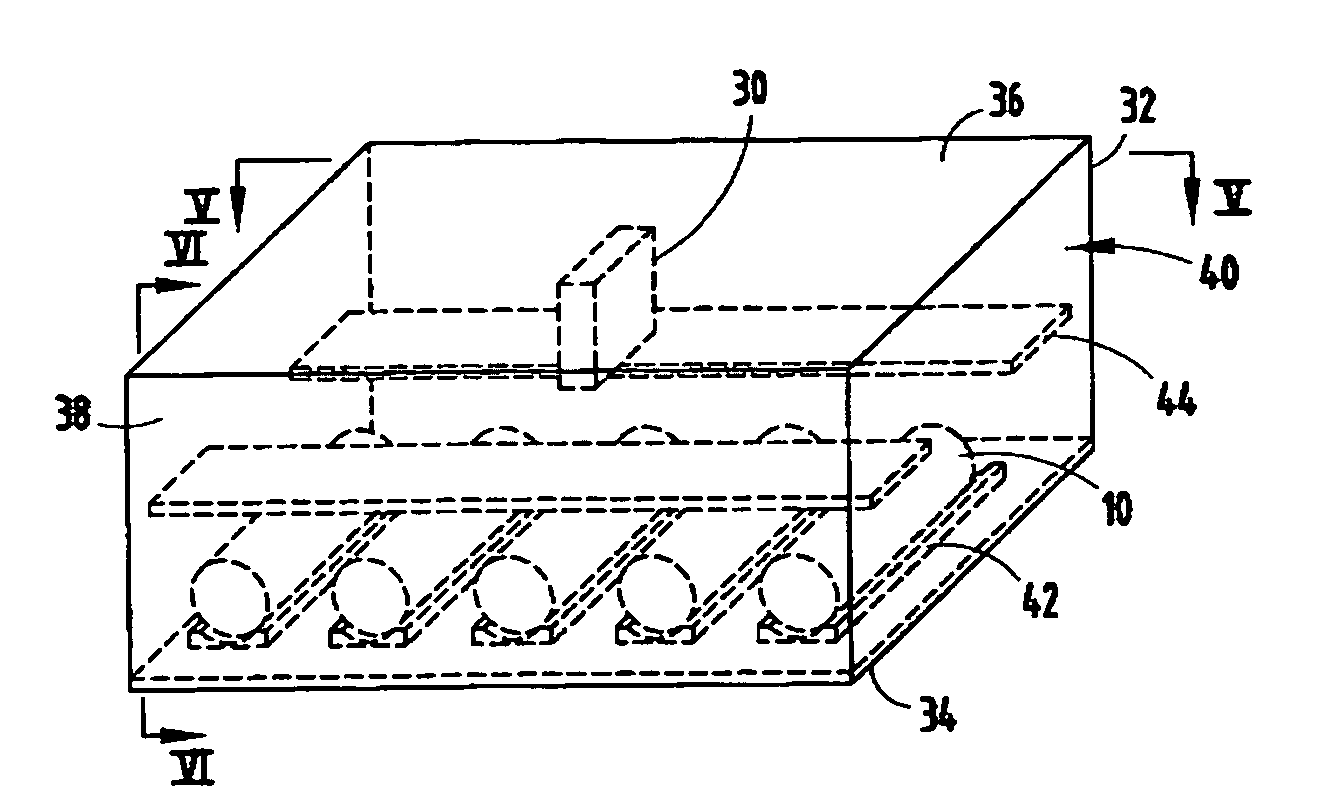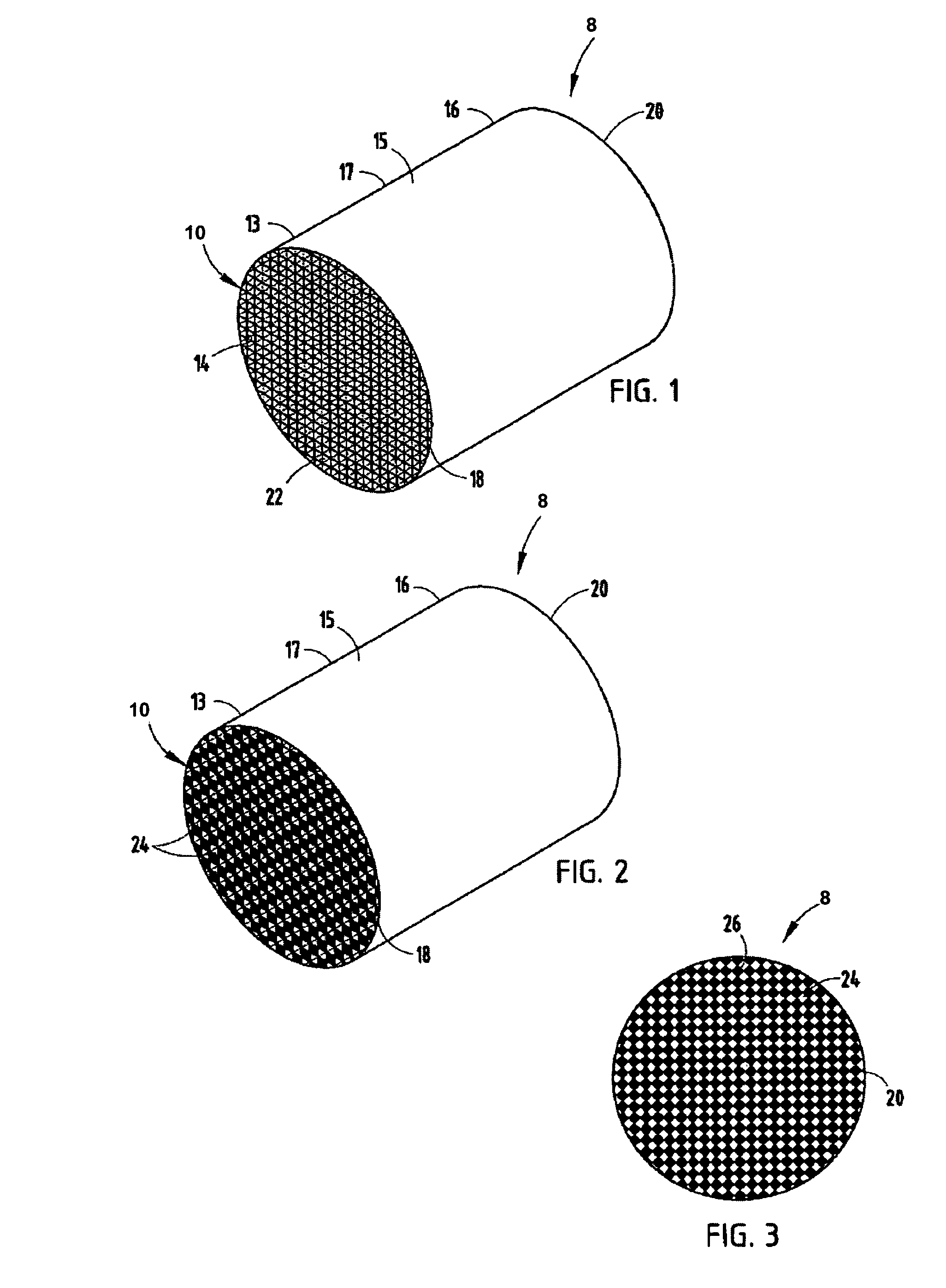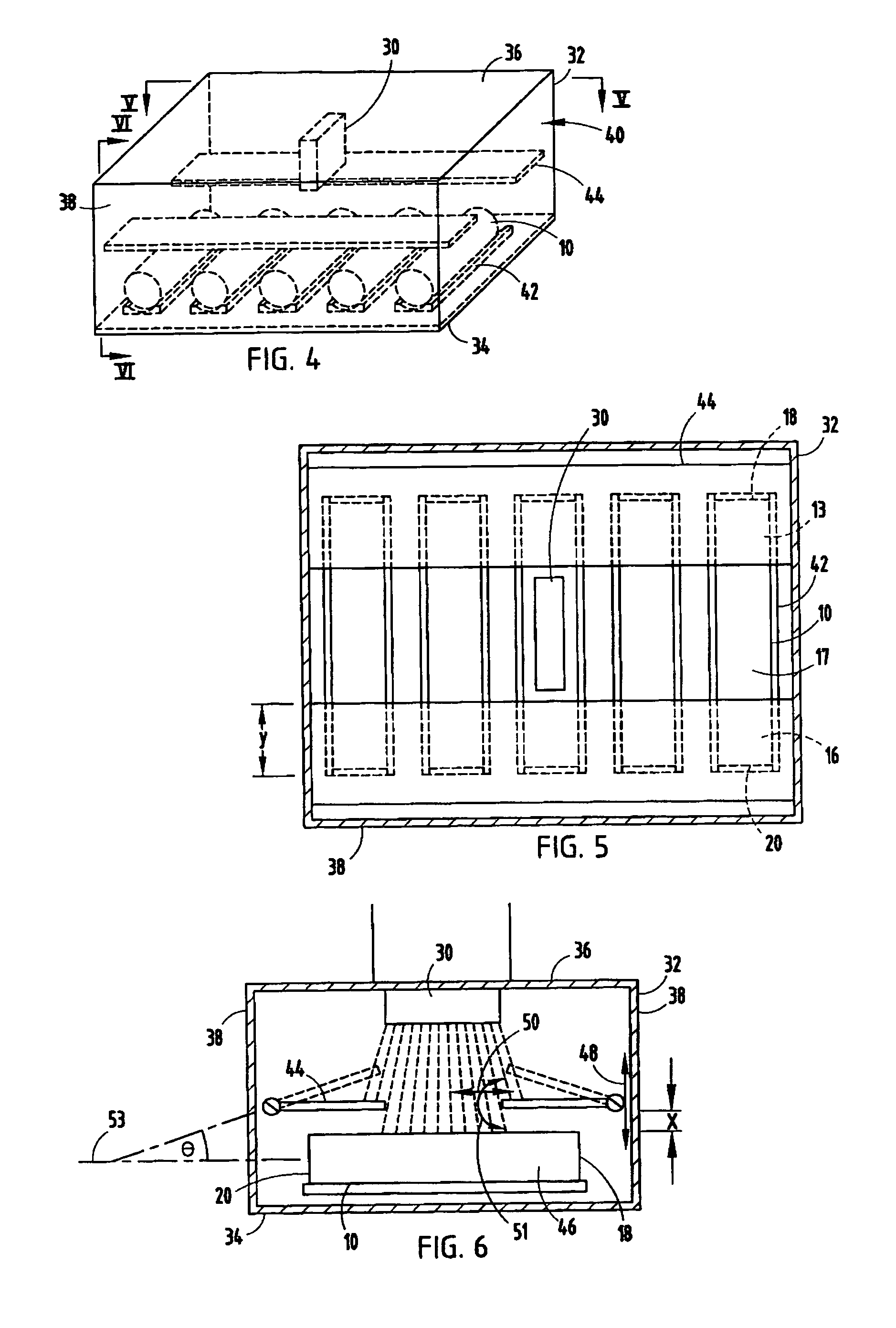Microwave drying of ceramic structures
a technology of ceramic structures and microwaves, applied in the direction of electric/magnetic/electromagnetic heating, lighting and heating apparatus, etc., can solve the problems of reduced structural strength, inability of microwave radiation to properly penetrate into and effect uniform heating within the interior portions, and inability to reduce heat-induced structural degradation. , to achieve the effect of uniform drying and reducing heat-induced structural degradation
- Summary
- Abstract
- Description
- Claims
- Application Information
AI Technical Summary
Benefits of technology
Problems solved by technology
Method used
Image
Examples
Embodiment Construction
[0031]Several methods and procedures are known in the art for forming green ceramic honeycomb structures featuring a plurality of hollow passages or channels extending therethrough. The present inventive process is directed to drying such structures regardless of the specific method used to form the honeycomb shape. The present inventive method for drying ceramic honeycomb structures 10 includes providing microwave radiation from a microwave generating source 30 (FIGS. 4-6) located within a microwave housing 32, exposing the ceramic honeycomb structure 10 to the microwave radiation, and shielding at least one of the ends 13, 16 from directly receiving the microwave radiation, such that the radiation absorbed by the middle portion 17 of the ceramic structure 10 is equal to or greater than the radiation absorbed by the at least one end 13, 16, as described herein. It is noted that the present inventive process may be used to process either plugged or non-plugged ceramic structures.
[00...
PUM
| Property | Measurement | Unit |
|---|---|---|
| angle | aaaaa | aaaaa |
| angle | aaaaa | aaaaa |
| angle | aaaaa | aaaaa |
Abstract
Description
Claims
Application Information
 Login to View More
Login to View More - R&D
- Intellectual Property
- Life Sciences
- Materials
- Tech Scout
- Unparalleled Data Quality
- Higher Quality Content
- 60% Fewer Hallucinations
Browse by: Latest US Patents, China's latest patents, Technical Efficacy Thesaurus, Application Domain, Technology Topic, Popular Technical Reports.
© 2025 PatSnap. All rights reserved.Legal|Privacy policy|Modern Slavery Act Transparency Statement|Sitemap|About US| Contact US: help@patsnap.com



